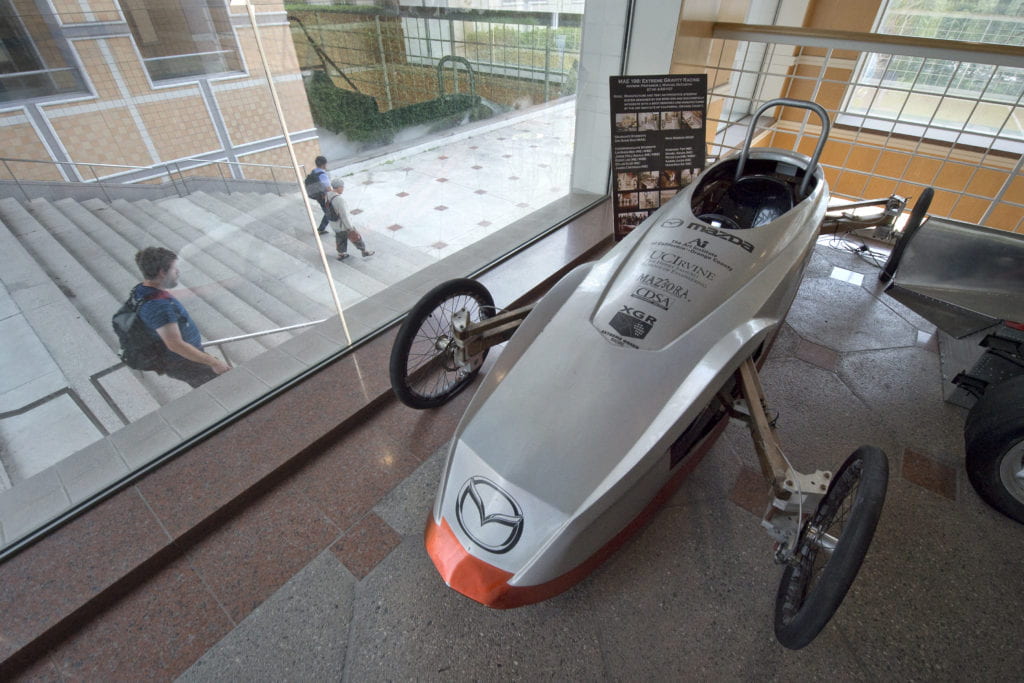Hidden treasures
A guide to cool artifacts and art on campus

If you know where to look, fascinating nuggets of art, history and culture abound at the University of California, Irvine. From cloned redwood trees to underground comics to a deadly scarf, UCI is a repository of the wild, weird and wonderful. In this ongoing series, we spotlight “hidden gems” around campus.
Road maps of the past
Long before Rand McNally, Thomas Guides and MapQuest, there were Justus Danckerts and Arnoldus Montanus. Along with other early mapmakers, these 17th-century Dutch cartographers guided travelers and helped shape perceptions of the world. Today, their fascinating renderings hang in UCI’s Humanities Studio as part of a $3.5 million collection of historical maps, botanical illustrations and portraits donated by art dealer Graham Arader. The stash is among several gifts Arader has made to various universities, under the condition that the artwork be accessible to students. UCI’s multi-room exhibit includes Audubon-style depictions of birds, a Lewis & Clark diagram of the western U.S., renowned cartographer Abraham Ortelius’ stretched-out view of America and Montanus’ engravings of life in the New World. Another highlight is Danckerts’ delightful map of early New England, which features drawings of local animals, forts and a 1600s version of Google Maps’ street view. “I do a whole lecture on Danckerts’ piece in my Picturing the World class,” says School of Humanities Dean Georges Van Den Abbeele.
In the 1930s, soapbox derby cars were typically homemade affairs built from a hodgepodge of orange crates, metal scraps and wagon wheels. No more. Today’s gravity-powered go-karts feature space-age materials, Formula One suspensions and wind-tunnel-tested aerodynamics. Consider UCI’s Buck Rogers-esque downhill racer. Sleek and silver with skinny wheels, the low-slung contraption was designed by UCI mechanical & aerospace engineering students in partnership with Mazda (Zoom-Zoom) and the Art Institute of Orange County. Equipped with four-wheel steering, the one-person vehicle won “most innovative” honors against motorless cars created by Porsche, Bentley and other automakers at the 2007 Extreme Green Race near Lake Tahoe. It’s now on display in the Engineering Gateway lobby, along with a single-seat electric race car – also developed in collaboration with Mazda and the Art Institute of O.C.
